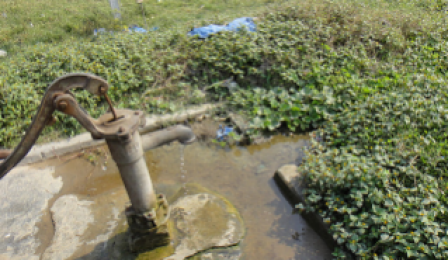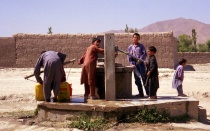Chronic Illness and Non-Communicable Disease

Faculty in the School of Public Health and Health Professions are conducting research to reduce the burden of Chronic Illness and Non-Communicable Diseases.
Adverse Health Effects Caused by the Consumption of Arsenic Contaminated Drinking Water
Xuefeng Ren, MD, PhD
In collaboration with Xiaojuan Guo, PhD, and Hongmei Wu, PhD, from Wenzhou Medical College
Location: China
Department: Epidemiology and Environmental Health
Chronic exposure to inorganic arsenic (iAs), a known human carcinogen with a ubiquitous distribution in the natural environment, currently affects more than 100 million people worldwide. In collaboration with colleagues in China, Ren is working on several projects to understand adverse health effects related to arsenic exposure such as skin lesions and various cancers. The study field is located in Hetao Plain in Inner Mongolia, China, an area where the drinking water is highly contaminated by arsenic.
The first study aims to determine whether folic acid supplementation can be used as a preventive measure in arsenic-endemic regions. The team has conducted a double-blind placebo-controlled folate intervention trial among people who had arsenic exposure through drinking water in Hetao Plain.
The second proposed study will determine if a causal association of iAs exposure, obesity and diabetes exists. The goal will be to elucidate the role of the environmental factors, i.e., arsenic exposure, in the pathogenesis of obesity and diabetes, and to provide critical information needed to prevent the obesity and diabetes epidemic worldwide.
The third study will be based on the fact that both theoretical and laboratory evidence supports that iAs can alter DNA methylation, and thus deregulate gene expression. This has been suggested to play a major role in arsenic-induced toxicity and carcinogenesis. Recent animal studies indicate that environmentally induced epigenetic alterations can be inherited across generations while evidence of epigenetic inheritance in humans is currently lacking. The team will investigate the effects of arsenic exposure in altering DNA methylation and its subsequent effect in changing gene expression. They will aim to determine whether these alterations can be inherited, and whether they are associated with arsenic-induced adverse health effects. The unique study population—three generations of families—will provide valuable information for helping to identify at-risk individuals exposed to arsenic. It may also provide new targets for preventive and therapeutic interventions.



